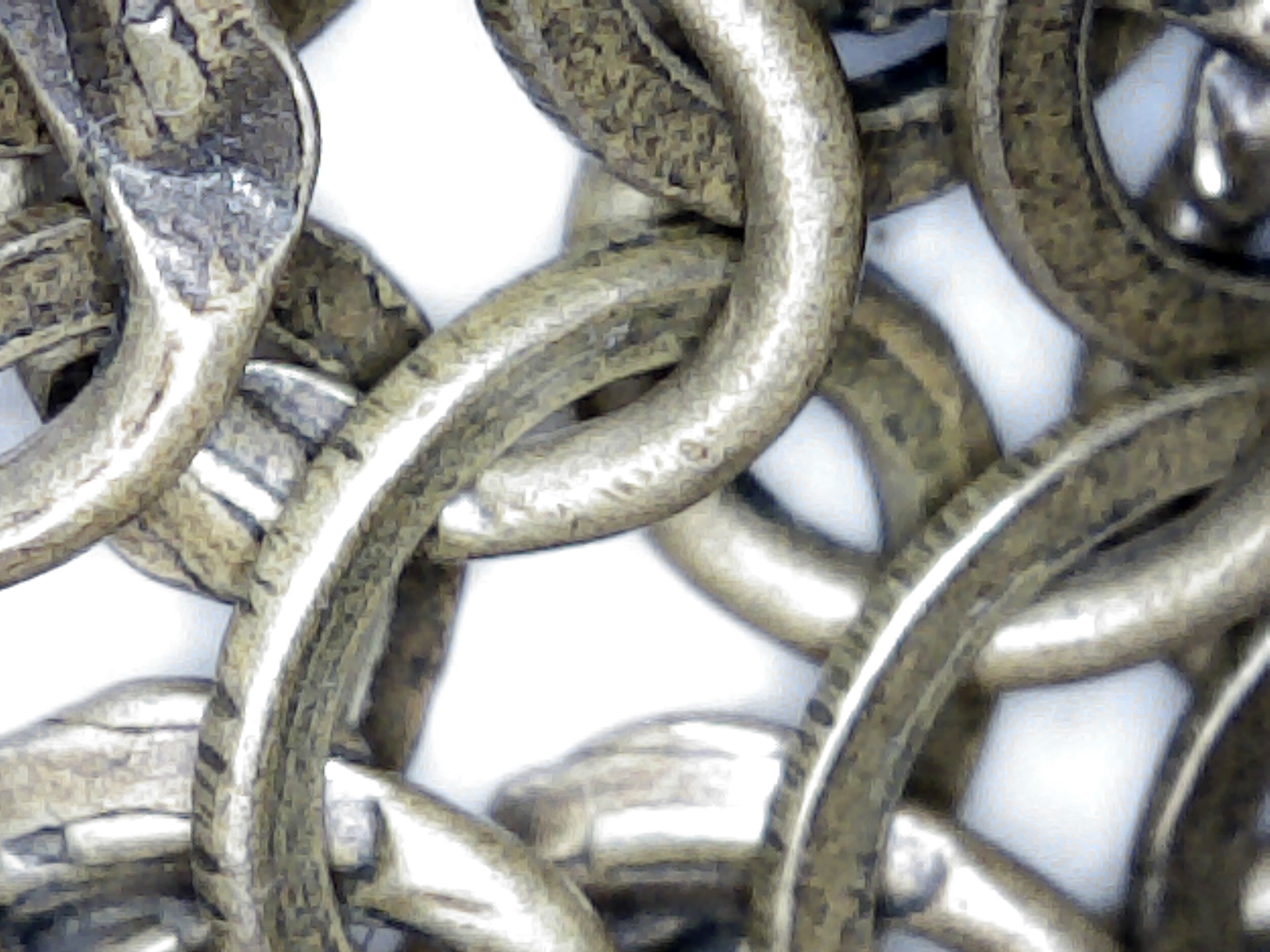^ Everything that Sir Ian said!
The way they seem to make their garments is in "squares" - this is most evident from the tube arms. They probably have entry level / basic people doing simple 4 in 1 squares, and then the more experienced workers will take those pre-made squares and assemble them into faulds (by putting a series of squares with some contracting joins every now and then, if you're lucky), or shirts (tube body & tube arms is just building squares, arm pits are the only non-square area and they're primarily just diamond gussets..).
Then, as said, it's the rings. Historical mail, the few that I've handled, isn't round, and isn't flat. It's a "flattened round". Picture taking a round ring, and lightly whacking it to put a flat spot on the top and bottom, but still having rounded sides.
Edit for clarity: I'm talking about the solids / washers, as compared to the "whack flat" modern ones"clickable 16th century example (courtesy of Allen Antiques):
Great example of the "flattened round" profile
Pin riveted isn't non-historical, it's just that the final result isn't nearly as flush and doesn't quite look right. Granted there is surely some historical mail that was "sloppy" like this, but if portraying knights and people of financial means, it probably wouldn't be correct. Then there's the whole aspect of modern metals vs historical metals. Proper type of iron, etc. And whether the wire has been drawn properly.
clickable 16th century example (courtesy of Allen Antiques):
Note the way the rivets look, and compare it with modern mail
And a truly well-tailored mail garment isn't built from squares. You'll have contractions and tapers (reductions and expansions) where you have 3-in-1 and 5-in-1 to do so. I've seen a few with a "pocket" over the shoulder blades, where it is baggier so that it can move better. And the sleeves aren't at top dead center of the shirt; they're more forward, where your arms naturally hang and move.
In short, exactly as Sir Ian said - it would all have to completely start over.
Now, what we have now, especially with some shops now offering tailored maille, and some offering voiders, partial sleeves, and faulds - we are
WORLDS ahead of what it was 15 or 20 years ago when I bought my first tube-sleeved, butted ring haubergeon. And not only that, I paid more for that than you can get a riveted or riveted/solids one for now, which is pretty impressive given the escalating price of most things over the last 15 years. Common plate armor has come a long, long way in that short time too.

The standard riveted mail, but tailored, is the most reasonable thing unless you're willing to spend a few thousand dollars on a haubergeon.
If you're willing to spend a little bit on a set of pliers and some loose rings and rivets (maybe $50 worth), you can tailor the mail yourself. It's time consuming, but not specifically "hard". It doesn't require any specialty tools beyond a set of mail pliers, which are just regular pliers with a set of divots for setting the rivets (I'm a poet!). And since it's mail, if you "screw up" it's all fixable; it's just a bunch of rings assembled in a pattern.